Phoenicia › Attila the Hun › The Candaces of Meroe » Origins and History
Articles and Definitions › Contents
- Phoenicia › Origins
- Attila the Hun › Who Was
- The Candaces of Meroe › Who Was
Ancient civilizations › Historical places, and their characters
Phoenicia › Origins
Definition and Origins

Phoenicia was an ancient civilization composed of independent city -states located along the coast of the Mediterranean Sea stretching through what is now Syria, Lebanon and northern Israel. The Phoenicians were a great maritime people, known for their mighty ships adorned with horses' heads in honor of their god of the sea, Yamm, the brother of Mot, the god of death. The island city of Tyre and the city of Sidon were the most powerful states in Phoenicia with Gebal/ Byblos and Baalbek as the most important spiritual/religious centers. Phoenician city-states began to take form c. 3200 BCE and were firmly established by c. 2750 BCE. Phoenicia thrived as a maritime trader and manufacturing center from c. 1500-332 BCE and was highly regarded for their skill in ship-building, glass-making, the production of dyes, and an impressive level of skill in the manufacture of luxury and common goods.
THE PURPLE PEOPLE
The purple dye manufactured and used in Tyre for the robes of Mesopotamian royalty gave Phoenicia the name by which we know it today (from the Greek Phoinikes for Tyrian Purple ) and also accounts for the Phoenicians being known as 'purple people' by the Greeks (as the Greek historian Herodotus tells us) because the dye would stain the skin of the workers.
IN ITS TIME PHOENICIA WAS KNOWN AS CANAAN & IS THE LAND REFERENCED IN THE HEBREW SCRIPTURES.
ScripturesHerodotus cites Phoenicia as the birthplace of the alphabet, stating that it was brought to Greece by the Phoenician Kadmus (sometime before the 8th century BCE) and that, prior to that, the Greeks had no alphabet. The Phoenician alphabet is the basis for most western languages written today and their city of Gebal (called by the Greeks 'Byblos') gave the Bible its name (from the Greek Ta Biblia, the books) as Gebal was the great exporter of papyrus ( bublos to the Greeks) which was the paper used in writing in ancient Egypt and Greece. It is also thought that many of the gods of ancient Greece were imported from Phoenicia as there are certain indisputable similarities in some stories concerning the Phoenician gods Baal and Yamm and the Greek deities of Zeus and Poseidon. It is also notable that the battle between the Christian God and Satan as related in the biblical Book of Revelation seems a much later version of the same conflict, with many of the same details, one finds in the Phoenician myth of Baal and Yamm.

Map of Phoenicia
In its time Phoenicia was known as Canaan and is the land referenced in the Hebrew Scriptures to which Moses led the Israelites from Egypt and which Joshua then conquered (according to the biblical books of Exodus and Joshua but uncorroborated by other ancient texts and unsupported by the physical evidence thus far excavated). According to the historian Richard Miles, the people of the land recognized,
a shared ethnic identity as Can'nai, inhabitants of the land of Canaan yet, despite a common linguistic, cultural, and religious inheritance, the region was very rarely politically united, with each city operating as a sovereign state ruled over by a king (26).
The city-states of Phoenicia flourished through maritime trade between c. 1500-322 BCE when the major cities were conquered by Alexander the Great and, after his death, the region became a battleground in the fight between his generals for succession and empire. Artifacts from the region have been found as far away as Britain and as close as Egypt and it is clear that Phoenician luxury goods were highly prized by the cultures with whom they traded.
TRADING MIDDLEMEN
The Phoenicians were primarily known as sailors who had developed a high level of skill in ship-building and were able to navigate the often turbulent waters of the Mediterranean Sea. Shipbuilding seems to have been perfected at Byblos where the design of the curved hull was first initiated. Richard Miles notes that:
...over the following centuries, Byblos and other Phoenician states such as Sidon, Tyre, Arvad, and Beirut created an important niche for themselves by transporting luxury goods and bulk raw materials from overseas markets back to the Near East. These new trade routes took in much of the eastern Mediterranean, including Cyprus, Rhodes, the Cyclades, mainland Greece, Crete, the Libyan coast, and Egypt. (28)
However, Phoenician sailors were also known to have traveled to Britain and to Mesopotamian ports.
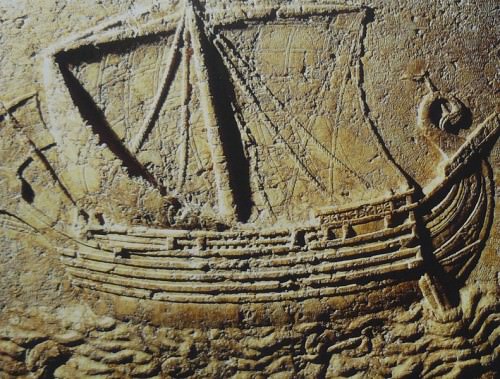
Phoenician-Punic Ship
Evidence gathered from Phoenician shipwrecks provide modern-day archaeologists with first-hand evidence of some of the cargo these ships carried:
There were ingots of copper and tin, as well as storage vessels which are thought to have contained unguents, wine and oil, glass, gold and silver jewellry, precious objects of faience (glazed earthenware), painted potterytools, and even scrap metal. (Miles, 28)
Because their goods were so highly prized, Phoenicia was often spared the kinds of military incursions suffered by other regions of the Near East. For the most part, the great military powers preferred to leave the Phoenicians to their trade but that did not mean there was no envy on the part of their neighbors. The Bible refers to the Phoenicians as the "princes of the sea" in a passage from Ezekiel 26:16 in which the prophet seems to predict the destruction of the city of Tyre and seems to take a certain satisfaction in the humbling of those who had previously been so renowned.

Phoenician Glassware
However that may be, there is no doubt regarding the popularity of the goods produced in Phoenicia. So extraordinary was the skill of the artists of Sidon in glass-making that it was thought the Sidonians invented glass. They provided the model for the Egyptian manufacture of faience and set the standard for work in bronze and silver. Further, the Phoenicians seem to have developed the art of mass production in that similar artifacts, fashioned in the same way and in large quantities, have been found in the different regions with which the Phoenicians traded. Miles notes,
Favourite motifs included Egyptian magic symbols such as the eye of Horus, the scarab beetle and the solar crescent, and these were thought to protect their wearers from the evil spirits that prowled the world of the living (30).
The Phoenician purple dye, already mentioned above, became the standard adornment of royalty from Mesopotamia, through Egypt, and up through the Roman Empire. All of this was accomplished through the competition between the city-states of the region, the skill of the sailors who transported the goods, and the high art attained by the craftsmen in the manufacture of the goods. The competition was particularly keen between the cities of Sidon and Tyre, arguably the most famous of the city-states of Phoenicia who, along with the merchants of Byblos, carried and transmitted the cultural beliefs and societal norms of the nations they traded with to each other. The Phoenicians, in fact, have been called the `ancient middlemen' of culture by many scholars and historians because of their role in cultural transference.
THE CITY OF SIDON WAS INITIALLY THE MOST PROSPEROUS BUT STEADILY LOST GROUND TO HER SISTER CITY OF TYRE.
TYRE & SIDON
The city of Sidon (modern Sidonia, Lebanon) was initially the most prosperous but steadily lost ground to her sister city of Tyre.Tyre formed an alliance with the newly formed Kingdom of Israel which proved very lucrative and further expanded its wealth by decreasing the power of the clergy and more efficiently distributing the wealth to the citizens of the city. Sidon, hoping to form an equally prosperous trade with Israel, attempted to cement trade and alliance through marriage. Sidon was the birthplace of the princess Jezebel who was married to the King of Israel, Ahab, as chronicled in the biblical books of I and II Kings. Jezebel's refusal to relinquish her religion, dignity, and cultural identity to her husband's culture did not sit well with many of his subjects, most notably the Hebrew prophet Elijah who regularly denounced her. Ahab and Jezebel's rule was ended by a coup, inspired by Elijah, in which the general Jehu took control of the army and usurped the throne. Following this, trade relations between Sidon and Israel ceased. Tyre, however, continued to flourish.

Phoenician Bronze Bowl from Nimrud
ALEXANDER CONQUERS PHOENICIA
In 334 BCE Alexander the Great conquered Baalbek (re-naming it Heliopolis) and marched on to subdue the cities of Byblos and Sidon in 332 BCE. Upon his arrival at Tyre, the citizens followed the example set by Sidon and submitted peacefully to Alexander's demand for submission. Alexander then wished to offer a sacrifice in the holy temple of Melqart at Tyre and this the Tyrians could not allow. The religious beliefs of the Tyrians forbade foreigners from sacrificing, or even attending services, in the temple, and so they offered Alexander a compromise whereby he could offer sacrifice in the old city on the mainland but not in the temple on the island complex of Tyre. Alexander found this proposal unacceptable and sent envoys to Tyre demanding their surrender. The Tyrians killed the envoys and threw their bodies over the walls.
At this point Alexander ordered the siege of Tyre and was so determined to take the city that he built a causeway from the ruins of the old city, debris, and felled trees, from the mainland to the island (which, owing to sediment deposits over the centuries is why Tyre is not an island today), and, after seven months, breached the walls and massacred most of the populace. It is estimated that over 30,000 citizens of Tyre were massacred or sold into slavery and only those wealthy enough to properly bribe Alexander were allowed to escape with their lives (besides those who found a way to escape by stealth). After the fall of Tyre, the other city-states followed and surrendered to Alexander's rule, thus ending the Phoenician Civilization and ushering in the Hellenistic Age.
ROMAN PHOENICIA
By 64 CE the disassembled parts of Phoenicia were annexed by Rome and, by 15 CE were colonies of the Roman Empire with Heliopolis remaining an important pilgrimage site which boasted the grandest religious building (the Temple of JupiterBaal) in all of the Empire, the ruins of which remain well preserved to this day. The most famous legacy of Phoenicia is undoubtedly the alphabet but their contribution to the arts, and their role in disseminating the cultures of the ancient world, is equally impressive.
Attila the Hun › Who Was
Definition and Origins
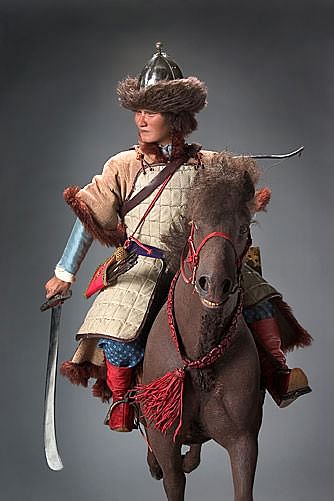
Attila the Hun (reigned 434-453 CE) was the leader of the ancient nomadic people known as the Huns and ruler of the Hunnic Empire, which he established. His name means "Little Father" and, according to some historians, may not have been his birth name but "a term of affection and respect conferred on his accession" (Man, 159). This name was synonymous with terror among his enemies and the general populace of the territories that his armies swept through.
Attila 's incursions into the regions of Germania drove the populations across the borders of the Western Roman Empire and contributed to its decline in the late 5th century CE. The influx of the Visigoths, in particular, and their later revolt against Rome, is considered a significant contributor to Rome's fall. The Visigoth victory over the Romans at the Battle of Adrianople in 378 CE was an event the Roman military never fully recovered from. Further, that victory encouraged the Huns to join the Visigoths (their former adversaries) in plundering Roman territories. The apparent weakness of Rome encouraged Attila, once he became leader of the Huns, to make and break treaties (such as the Treaty of Margus in 439 CE) without fear of consequences, and his wide-scale destruction of Roman cities and towns met with little or no resistance for the most part, making it clear that the Roman army was no longer the kind of invincible fighting force it once had been.
ATTILA WAS A BRILLIANT HORSEMAN & MILITARY LEADER, & HE HELD HIS EMPIRE TOGETHER THROUGH THE STRENGTH OF HIS INDIVIDUAL PERSONALITY.
Attila's ability to command a vast army of warriors (often comprised of different tribes such as the Alans, Alemanni, and Ostrogoths) was also in contrast to Roman generals of his time, who had difficulty keeping their non-Roman contingents under control (most clearly seen in the Roman general Litorius' campaign against the Goths in 439 CE, in which he could not stop his Hun allies from raiding the regions they passed through). Attila was a brilliant horseman and military leader, possessed a commanding presence, and held his empire together through the strength of his individual personality. He not only made the Huns the most effective fighting force of the time, but he also built a vast empire from virtually nothing in less than ten years. At its height, this empire stretched from central Asia across to modern-day France and down through the Danube Valley. After he died in 453 CE, his sons tried to hold his empire together but failed, and it broke apart by 469 CE.
EARLY LIFE & RISE TO POWER
Attila's date and place of birth is unknown. The historian Peter Heather writes:
Our ignorance of the Huns is astounding. It is not even clear what language they spoke. Most of the linguistic evidence we have comes in the form of personal names - Hunnic rulers and their henchmen - from the time of Attila. But by then, Germanic had become the lingua franca of the Hunnic Empire and many of the recorded names are either certainly or probably Germanic. Iranian, Turkish, and Finn-Ugrian (like the later Magyars) have all had their proponents [for the language of the Huns], but the truth is that we do not know what language the Huns spoke and probably never will. The direct evidence we have for the motivations and forms of Hunnic migration is equally limited. According to [the ancient writer] Ammianus, there was nothing to explain `The origin and seedbed of all evils: the people of the Huns who dwell beyond the Sea of Azov near the frozen ocean, and are quite abnormally savage.' They were just so fierce that it was natural for them to go around hitting people.Similar images of Hunnic ferocity are found in other sources (209).

Attila the Hun
Although in the present day, his mother's name is sometimes given as Hungysung Vladdysurf, her name is actually not known, and this name is considered a recent fabrication. His father's name was Mundzuk, and his uncle, Rugila (also known as Rua and Ruga), was king of the Huns. As a young man, Attila, and his older brother Bleda (also known as Buda), were taught archery, how to ride and care for horses, and how to fight. They were also taught Latin and Gothic to enable them to do business with the Romans and Goths. Historians are divided on how much can be said with certainty regarding Attila's early years, however, and some (such as John Man) claim that nothing is known of his early life, not even his birth name, and nothing should be inferred based on his later accomplishments.
Whether Rugila had sons to succeed him is not known, and Mundzuk seems to have died early in the boys' lives, so it appears that either Bleda or Attila would be Rugila's heir and succeed him as king; therefore, their education and instruction in warfarewould have prepared them for the responsibilities of leadership (although some historians, such as Christopher Kelly, suggest that Attila and Bleda may have assassinated Rugila's sons on campaign to assume power and, again, Man claims no such assumptions should be made). Both boys are thought to have been present at Hun war councils and negotiations from an early age. Even before Attila became king, the Huns were a formidable fighting force, although they would become more so later under his rule. They were expert horsemen whose steeds, according to ancient reports, would actually fight for them in battle with teeth and hooves. The historian and former US Army Lt. Col. Michael Lee Lanning describes the Hun army thusly:
Hun soldiers dressed in layers of heavy leather greased with liberal applications of animal fat, making their battle dress both supple and rain resistant. Leather-covered, steel-lined helmets and chain mail around their necks and shoulders further protected the Hun cavalrymen from arrows and sword strikes. The Hun warriors wore soft leather boots that were excellent for riding but fairly useless for foot travel. This suited the soldiers, for they were much more comfortable in the saddle than on the ground (62).
When Rugila died on campaign against Constantinople in 433 CE, leadership passed to Attila and Bleda. Lanning writes,
Attila inherited an army that had waged war against its neighbors, particularly the Eastern Roman Empire, for hundreds of years. Ruga's operations against the Romans had been so successful that Rome paid the Huns an annual tribute to maintain the peace (61).
The brothers ruled jointly - each in control of their own regions and populace - and, as Lanning notes, frequently dealt with the Eastern Roman Empire, who formerly had paid the Huns as mercenaries to take care of the other tribes harassing Rome's boundaries, but now found they were paying to keep the Huns from invading.
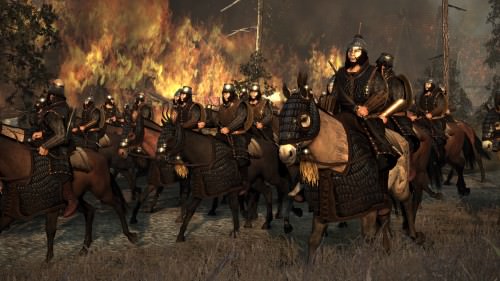
Army of Attila the Hun
Attila and Bleda together brokered the Treaty of Margus with Rome in 439 CE. This treaty continued the precedent of Rome paying off the Huns in return for peace, which would be a more or less constant stipulation in Roman-Hun relations until Attila's death. An agreement between the Huns and the Romans had already been brokered in 435 CE by the Roman general Flavius Aetius (391-454 CE), who had lived among the Huns as a hostage in his youth, spoke their language, and employed them to his advantage in his various power struggles in the empire. The Treaty of Margus expanded on Aetius' treaty: the Romans promised to return all Hun refugees who had fled into Roman territories, would not enter into pacts or treaties with enemies of the Huns, would establish fair trading rights and, of course, would "make an annual payment of seven hundred pounds of golddirectly to Attila and Bleda" (Kelly, 118). For their part, the Huns promised not to attack Rome, not to enter into pacts or treaties with Rome's enemies, and to defend the Danube frontier and the provinces of the empire.
The treaty concluded, the Romans were able to withdraw their troops from the Danube region and send them against the Vandals who were threatening Rome's provinces in Sicily and North Africa. The Huns turned their attention east after the Margus Treaty and warred against the Sassanid Empire but were repelled and driven back toward the Great Hungarian Plain, which was their home base. With the Roman troops who once guarded the border now deployed to Sicily, the Huns saw an opportunity for easy plunder. Kelly writes, "As soon as Attila and Bleda received reliable intelligence that the fleet had left for Sicily, they opened their Danube offensive" (122). They claimed the Romans had violated the Margus treaty by not sending back all the Hun refugees in Roman territory and, further, claimed that a Roman bishop had made a secret trip into Hun territory to desecrate Hun graves and steal valuable grave goods - and they wanted this bishop turned over to them.
ATTILA & BLEDA DROVE THEIR ARMIES THROUGH THE BORDER REGIONS & SACKED THE CITIES OF THE PROVINCE OF ILLYRICUM.
Theodosius sent his general Flavius Aspar to try to negotiate with Attila and Bleda, but it was no use. Attila showed Aspar recently disturbed graves, but there was no way of telling whose graves they were, who had disturbed them, or what may have been taken from them. With no proof of a crime, Aspar refused to turn the bishop over to the Huns and, further, claimed he had no knowledge of Hun refugees hiding from Attila and Bleda on Roman soil. The Huns insisted, Aspar could not comply, and negotiations reached a stalemate. Aspar returned to Constantinople to report these developments to Theodosius but does not seem to have felt there was any imminent threat of a Hun invasion. The refugees in question were Huns who had fled Attila's rule, and who he wanted returned before they could stir up rebellion against him. As it turned out, there were still a number of refugees living in Roman territory (who would later be handed over), and the bishop Attila wanted most likely did rob the graves and would later betray the city of Margus to the Huns so, as it happened, it would have been better if Aspar had simply handed him and the refugees over in the first place.
He did not do so, however, and considering the treaty broken, Attila mobilized for war. As Aspar headed back toward Constantinople in the summer of 441 CE, Attila and Bleda drove their armies through the border regions and sacked the cities of the province of Illyricum, which were very profitable Roman trade centers. They then further violated the Treaty of Margus by riding on to that city and destroying it (with the help of the bishop who opened the gates for them). Theodosius II (401-450 CE) then declared the treaty broken and recalled his armies from the provinces to stop the Hun rampage. Attila and Bleda responded with a full-scale invasion, sacking and destroying Roman cities all the way to within 20 miles of the Roman capital of Constantinople. The city of Naissus, birthplace of the emperor Constantine the Great, was razed and would not be rebuilt for a century afterwards. The Huns had learned a great deal about siege warfare from their time serving in the Roman army and expertly put this knowledge to use, literally wiping whole cities, such as Naissus, off the map. Their offensive was all the more successful because it was completely unexpected. Theodosius II had been so confident that the Huns would keep the treaty that he refused to listen to any council that suggested otherwise. Lanning comments on this, writing :
Attila and his brother valued agreements little and peace even less. Immediately upon assuming the throne, they resumed the Hun offensive against Rome and anyone else who stood in their way. Over the next ten years, the Huns invaded territory which today encompasses Hungary, Greece, Spain, and Italy. Attila sent captured riches back to his homeland and drafted soldiers into his own army while often burning the overrun towns and killing their civilian occupants. Warfare proved lucrative for the Huns but wealth apparently was not their only objective.Attila and his army seemed genuinely to enjoy warfare, the rigors and rewards of military life were more appealing to them than farming or attending livestock (61).
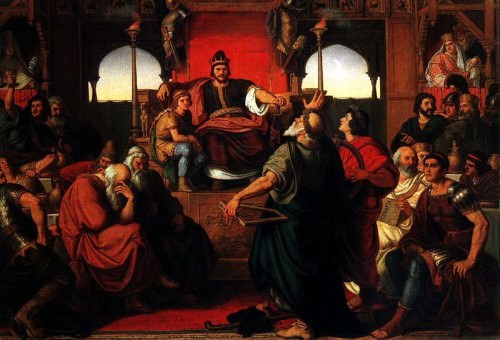
Feast of Attila
Theodosius II, realizing he was defeated but unwilling to admit total defeat, asked for terms; the sum Rome now had to pay to keep the Huns from further destruction was more than tripled. The historian Will Durant writes, "Theodosius II of the Eastern Empire and Valentinan III of the Western, both paid him tribute as a bribe to peace, disguising it among their peoples as payments for services rendered by a client king" (39). After their Danube Offensive, Attila and Bleda led their troops back home to the Great Hungarian Plain, where Bleda then vanishes from the historical record. Kelly cites "the most reliable Roman account", Priscus, who writes that three years after the offensive, "Bleda, king of the Huns, was assassinated as a result of the plots of his brother Attila" (129). Other scholars have suggested that Bleda may have been killed on campaign but, however he died, in 445 CE, Attila became the sole leader of the Huns and the most powerful military commander in Europe.
ATTILA'S EARLY REIGN & HONORIA'S PROPOSAL
The historian Jordanes (6th century CE), who wrote the only ancient account of the Goths still extant, includes their interactions with the Huns, describing Attila at length:
He was a man born into the world to shake the nations, the scourge of all lands, who in some way terrified all mankind by the rumors noised abroad concerning him. He was haughty in his walk, rolling his eyes hither and thither, so that the power of his proud spirit appeared in the movement of his body. He was indeed a lover of war, yet restrained in action; mighty in counsel, gracious to suppliants, and lenient to those who were once received under his protection. He was short of stature, with a broad chest and a large head; his eyes were small, his beard was thin and sprinkled with gray. He had a flat nose and a swarthy complexion, revealing his origin (Jordanes, 102).
Although Attila is almost always represented as a vicious warrior on horseback, slaughtering the multitudes, he was actually a more complex individual, as the Roman writer Priscus, who actually met and dined with Attila, presents him. Historian Will Durant (following the descriptions from ancient accounts like those of Priscus) writes of Attila:
He differed from the other barbarian conquerors in trusting to cunning more than to force. He ruled by using the heathen superstitions of his people to sanctify his majesty; his victories were prepared by the exaggerated stories of his cruelty which perhaps he had himself originated; at last even his Christian enemies called him the "scourge of God" and were so terrified by his cunning that only the Goths could save them. He could neither read nor write, but this did not detract from his intelligence. He was not a savage; he had a sense of honor and justice, and often proved himself more magnanimous than the Romans. He lived and dressed simply, ate and drank moderately, and left luxury to his inferiors, who loved to display their gold and silver utensils, harness, and swords, and the delicate embroidery that attested the skillful fingers of their wives. Attila had many wives, but scorned that mixture of monogamy and debauchery which was popular in some circles of Ravenna and Rome.His palace was a huge loghouse floored and walled with planed planks, but adorned with elegantly carved or polished wood, and reinforced with carpets and skins to keep out the cold (39).
Among the "heathen superstitions" Durant notes is the war sword Attila carried, which he claimed was left for him by the Roman god of war, Mars. This sword, according to Jordanes, was discovered by accident:
When a certain shepherd beheld one heifer of his flock limping and could find no cause for this wound, he anxiously followed the trail of blood and at length came to a sword it had unwittingly trampled while nibbling the grass. He dug it up and took it straight to Attila. He rejoiced at this gift and, being ambitious, thought he had been appointed ruler of the whole world, and that through the sword of Mars supremacy in all wars was assured to him (102).
ATTILA SAW ROME AS A FEEBLE ADVERSARY & HE AGAIN INVADED THE REGION OF MOESIA, DESTROYING OVER 70 CITIES.
Attila saw Rome as a feeble adversary and so, starting in 446 or 447 CE, he again invaded the region of Moesia (the Balkan area), destroying over 70 cities, taking survivors as slaves, and sending the loot back to his stronghold at the city of Buda (possibly Budapest in present-day Hungary, though this claim has been contested by some historians). He was considered invincible and, in Durant's words, "having bled the East to his heart's content, Attila turned to the West and found an unusual excuse for war" (40). In 450 CE, Valentinian's sister, Honoria, was seeking to escape an arranged marriage with a Roman senator and sent a message to Attila, along with her engagement ring, asking for his help. Although she may never have intended anything like marriage, Attila chose to interpret her message and ring as a betrothal and sent back his terms as one half of the Western Empire for her dowry. Valentinian, when he discovered what his sister had done, sent messengers to Attila telling him it was all a mistake, and there was no proposal, no marriage, and no dowry to be negotiated. Attila asserted that the marriage proposal was legitimate, that he had accepted and would claim his bride, and mobilized his army to march on Rome.
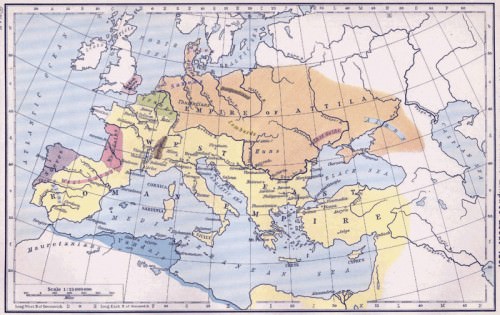
Empire of Attila the Hun
GAUL & BATTLE OF THE CATALUANIAN PLAINS
In 451 CE he began his conquests with an army of probably about 200,000 men, although sources, such as Jordanes, set the number higher at half a million. They took Gallia Belgica province (modern-day Belgium) easily and moved on to ravage the land. The only time Attila had been turned back from a conquest was by the Sassanids, and his reputation for slaughter and invincibility preceded him as he moved through Gaul. Durant writes,
All Gaul was terrified; here was no civilized warrior like Caesar, no Christian... this was the awful and hideous Hun, the flagellum dei [Scourge of God], come to punish Christian and pagan alike for the enormous distance between their professions and their lives (40).
The reputation of the Huns for brutality and indiscriminate slaughter was well known and sent the people of the land fleeing for their lives with whatever they could carry. The Roman writer Ammianus Marcellinus (330-391 CE) wrote of the Huns in his History of Rome :
The nation of the Huns surpasses all other barbarians in wildness of life. And though [the Huns] do just bear the likeness of men (of a very ugly pattern), they are so little advanced in civilization that they make no use of fire, nor any kind of relish, in the preparation of their food, but feed upon the roots which they find in the fields, and the half-raw flesh of any sort of animal. I say half-raw, because they give it a kind of cooking by placing it between their own thighs and the backs of their horses. When attacked, they will sometimes engage in regular battle. Then, going into the fight in order of columns, they fill the air with varied and discordant cries. More often, however, they fight in no regular order of battle, but by being extremely swift and sudden in their movements, they disperse, and then rapidly come together again in loose array, spread havoc over vast plains, and flying over the rampart, they pillage the camp of their enemy almost before he has become aware of their approach. It must be owned that they are the most terrible of warriors because they fight at a distance with missile weapons having sharpened bones admirably fastened to the shaft. When in close combat with swords, they fight without regard to their own safety, and while their enemy is intent upon parrying the thrust of the swords, they throw a net over him and so entangle his limbs that he loses all power of walking or riding (XXXI.ii.1-9).
The Hun army was one enormous cavalry unit that struck their adversaries quickly, neither asking for, nor offering, any mercy.Lanning writes:
Relying on mobility and shock effect, Attila rarely committed his soldiers to close, sustained combat. He preferred to approach his enemy using the terrain to hide his troops until he was within arrow range. While one rank fired at high angles to cause the defenders to raise their shields, another fired directly into the enemy lines. Once they had inflicted sufficient casualties, the Huns closed in to finish off the survivors (62).
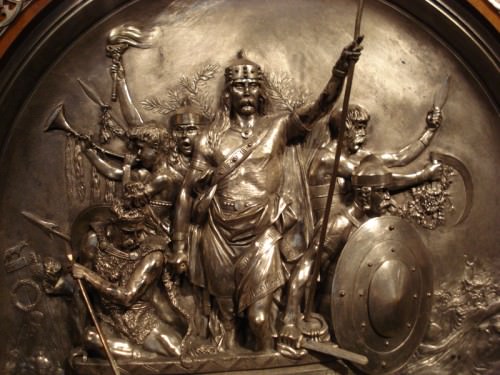
Victory of Merovech at the Battle of Catalaunian Fields
It is little wonder that no general was especially eager to engage the Hun forces under Attila. Kelly notes how the Huns "appeared as if from nowhere and melted away, leaving only destruction behind them. It was impossible to establish an effective early-warning system" (38). Attila took Trier and Metz without opposition, massacred the citizens, and then rode on, destroying everything in his path. He was finally met in battle by the combined forces of the Romans under Flavius Aetius, who understood Hun strategy and tactics, and the Visigoths under Theodoric I (reigned 418-451 CE) on the Cataluanian Plains.This engagement is known as the Battle of Cataluanian Fields or the Battle of Chalons and has been described as one of the bloodiest military conflicts in history and the first time Attila's forces were halted in an invasion of Europe. Historian Jack Watkins describes the battle:
The Romans, occupying the high ground, quickly succeeded in pushing the Huns back in confusion, and Attila had to harangue them to return to the fight. During fierce hand-to-hand fighting, King Theodoric of the Visigoths was killed. But rather than discouraging the Visigoths, their king's death enraged them and they fought with such spirit that the Huns were driven back to their camp as night fell. For several days the Huns did not move from their encampment, but their archers succeeded in keeping the Romans at bay. The desertion of the frustrated Visigoths allowed Attila to withdraw his army from the battlefield, and with his wagons of booty intact. The Romans did not pursue him; but his aura of invincibility had been shattered (85).
THE CAMPAIGN IN ITALY
Although Attila had been stopped in his invasion, he had hardly been defeated. The Romans claimed the victory, however, and returned to their homes in the hope that Attila would now harass someone else. In 452 CE, though, he returned to invade Italy and claim the bride who had promised him her hand in marriage. Here, as in Gaul, he spread a wide swath of destruction and so completely sacked the city of Aquileia that not only would it never rise again, but no one even knew where it had stood.The people of Italy, as the Gauls before them, were terrified of the Hun invasion but now, unlike the year before, Aetius did not have an army of sufficient force to stop Attila. Whole populations fled their cities and villages for safer regions and, in fact, this was how the city of Venice came to rise from the marshes to become the "City of Bridges" (among other names), as it is known as in the present day. In flight from Attila's army, people took refuge on what solid ground they could find in the watery regions they felt Attila would bypass. They chose wisely, in that Attila's forces avoided the lagoons and marched on toward more attractive grounds.
VALENTINIAN SENT POPE LEO I WITH A DELEGATION TO SEEK TERMS FROM ATTILA, BUT THE DETAILS OF THAT MEETING ARE UNKNOWN.
For reasons no one knows, the Huns stopped at the Po River. A famine had been plaguing Italy for the better part of two years, and quite possibly Attila had simply run out of supplies. It has also been suggested that plague had broken out in Attila's army, which forced him to abandon his plans. Further, there is the suggestion that his men cautioned him against continuing on to sack Rome. The Gothic commander Alaric I (reigned 394-410 CE) had sacked Rome in 410 CE and died shortly afterwards;superstition suggested Alaric's death was a direct result of his assault on such a prestigious city. It is also possible that some kind of peace was agreed to between Attila and Rome. Valentinian sent Pope Leo I with a delegation to seek terms from Attila, but the details of that meeting are unknown. All that is clear is that, following the meeting with Leo I and his delegates, Attila turned back and retreated to his stronghold in Hungary.
DEATH & LEGACY
Whether he remembered Honoria and the dowry is unknown (Durant, and others, claim he threatened to return to Italy for Honoria unless she was sent to him, but this is not clear from the primary sources), but he soon took a new, young wife, in 453 CE, named Ildico. Durant writes, "He celebrated the wedding with an unusual indulgence in food and drink. On the morrow he was found dead in bed beside his young wife; he had burst a blood vessel, and the blood in his throat had choked him to death" (40-41). As with Alexander the Great, alternative versions of Attila's death have been suggested, but Durant's version follows that of Priscus, which is the first given and considered the most reliable. Other versions include assassination by Ildico, a conspiracy involving the emperor of the East, Marcian (450-457 CE), who had Attila killed, and accidental death by alcohol poisoning or esophageal hemorrhage from drinking too much.
The entire army fell into intense grief over the loss of their leader. Attila's horsemen smeared their faces with blood and rode slowly, in a steady circle, around the tent which held his body. Kelly describes the aftermath of Attila's death:
According to the Roman historian Priscus of Panium, they [the men of the army] had cut their long hair and slashed their cheeks "so that the greatest of all warriors should be mourned not with tears or the wailing of women but with the blood of men." Then followed a day of grief, feasting, and funeral games; a combination of celebration and lamentation that had a long history in the ancient world. That night, far beyond the frontiers of the Roman empire, Attila was buried. His body was encased in three coffins; the innermost covered in gold, a second in silver, and a third in iron. The gold and silver symbolized the plunder that Attila had seized while the harsh gray iron recalled his victories in war (6).
According to legend, a river was then diverted, Attila buried in the river's bed, and the waters then released to flow over it covering the spot. Those who had taken part in the funeral were killed so that the burial place might never be revealed.According to Kelly, "these, too, were honorable deaths", in that they were part of the funeral honors for the great warrior who had brought his followers so far and accomplished so much for them.
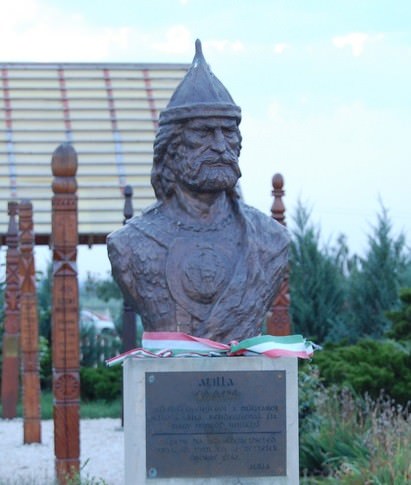
Attila the Hun
Following his funeral, his empire was divided among his sons who fought with each other for the greatest share, squandered their resources, and allowed the kingdom to fall apart. By 469 CE, only 16 years after Attila's death, the empire was gone.Attila's memory, however, lives on as one of the greatest military leaders of all time. He has been depicted since his death as the epitome of a warrior-king, and recent portrayals follow this traditional image. Dramatic feature films which reference him, even in passing, present him as a powerful warrior, and even in the Hollywood comedy Night at the Museum, from 2006 CE, Attila the Hun is depicted as a formidable force. Lanning writes:
Attila the Hun was the greatest battle captain of his age, his reputation striking terror in his enemies who both feared and respected the Scourge of God. More than fifteen hundred years later, his name remains synonymous with aggressive cavalry and the warrior ethos (63).
In March of 2014 CE it was reported that Attila's tomb had been discovered in Budapest, Hungary, which is thought to now comprise part of Attila's capital of Buda. The find generated a great deal of interest, and one of the researchers was even quoted in reports as saying, "In fact, this definitely seems to be the resting place of the almighty Attila, but further analysis needs to be done to confirm it.” Further analysis - by others not on the team that allegedly discovered the tomb - has revealed the claim to be a hoax. Although scholars have often been sceptical of the story of Attila being buried beneath a river, there is precedent for this. The Mesopotamian king Gilgamesh was also said to have been buried beneath a river, the Euphrates River, and this was long considered a myth. In April of 2003 CE, however, a German team of archaeologists claimed to have discovered the Tomb of Gilgamesh precisely where the ancient texts said it was.
Archaeological excavations, conducted through modern technology involving magnetization in and around the old riverbed of the Euphrates, revealed garden enclosures, specific buildings, and structures described in The Epic of Gilgamesh, including the great king's tomb. According to legend, Gilgamesh was buried at the bottom of the Euphrates when the waters parted upon his death. Much closer to Attila's time, Alaric I was said to have been buried beneath the waters of the Busento River in Italy after his death in 410 CE, the waters being diverted and then returned to their bed. According to the ancient sources regarding Attila's funeral, he was also buried beneath a river that was diverted and then returned to cover the tomb. It would seem imprudent, considering the precedent of the tomb of Gilgamesh story and the report of Alaric's burial, to dismiss the stories surrounding the last resting place of the great warrior Attila the Hun and to claim he was buried elsewhere. Wherever his tomb is, and what treasures it contains, remains unknown. The world-wide interest in the story of his tomb's discovery, however, is a testimony to how great a hold on people's imaginations Attila still commands. He remains to this day one of the most interesting and engaging figures from ancient history, and his name is still associated with the concept of an unstoppable force.
The Candaces of Meroe › Who Was
Definition and Origins
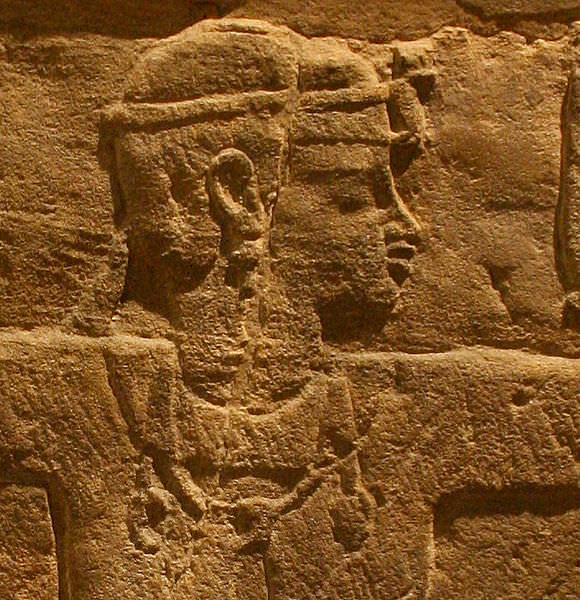
The Candaces of Meroe were the queens of the Kingdom of Kush who ruled from the city of Meroe c. 284 BCE-c.314 CE - algunos de los cuales gobernaron independientemente c. 170 BCE-c. 314 CE - en lo que ahora es Sudán. El título Candacees la versión latinizada del término Kentake o Kandake en meroítico y puede significar "reina regente" o "reina madre", pero también podría significar "mujer real". Aunque el término parece referirse originalmente a la madre del rey, de alrededor de c. 170 BCE también se usó para designar a un monarca femenino que reinó independientemente.
Las reinas que componen las Candaces de Meroe fueron las siguientes:
- Shanakdakhete (rc 170 BCE)
- Amanirenas (rc 40-10 BCE)
- Amanishakheto (rc 10 BCE-1 CE)
- Amanitore (rc 1-c. 25 CE)
- Amantitere (rc 25-c. 41 CE)
- Amanikhatashan (r.. 62-c. 85 CE)
- Maleqorobar (rc 266-c. 283 CE)
- Lahideamani (rc 306-c. 314 CE)
A “Candace, queen of the Ethiopians” is mentioned in the Bible when the apostle Philip meets “a eunuch of great authority” under her reign and converts him to Christianity (Acts 8:27-39). In this passage, as in other ancient works mentioning the Candace, the royal title has often been confused with a personal name.
Prior to c. 284 BCE, kings ruled Kush from Meroe but the king Ergamenes (also known as Arkamani I, r. 295-275 BCE) instituted a number of reforms and among these seems to be the elevation of royal women to the position of queen. The title “Kentake” appears prior to Ergamenes' reign but there is no evidence of women reigning alongside a king – only of a royal woman who was the king's mother; following his reign, however, the title often refers to a female monarch. Male rulers follow Ergamenes in succession and seem to have had queens who co-ruled or exerted significant influence, but the queen Candace Shanakdakhete (rc 170 BCE) reigned independently and so did a number of women after her.
MEROE FLOURISHED AS THE CAPITAL OF THE KINGDOM OF KUSH BETWEEN C. 750 BCE – 350 CE & BECAME LEGENDARY AS A CITY OF FABULOUS WEALTH.
Meroe flourished as the capital of the Kingdom of Kush between c. 750 BCE – 350 CE and became legendary as a city of fabulous wealth. Located on the Nile in the region of modern-day Sudan, Meroe grew rich from trade and its ironworks and abundant grain supply ensured a steady production of goods others wanted and needed; but it was the monarchy, periodically controlled by women, that established and maintained the trade which encouraged such affluence.
The city began to decline due to overuse of the land and resources and had already passed its peak when it was invaded by the Axumites (from the Kingdom of Axum, located in present-day Ethiopia/Eritrea) in c. 330 CE and sacked. It was abandoned 20 years later c. 350 CE and the title of Candace vanishes from the historical record afterwards.
THE RISE OF MEROE & ERGAMENES
Meroe was originally an administrative center south of the Kushite capital city of Napata. In 590 BCE Napata was sacked by the Egyptian king Psammeticus II (r. 595-589 BCE) and the capital was moved to Meroe. Napata had been heavily influenced by Egyptian culture and religion – as the entire Kingdom of Kush was initially – due to close contact through trade and Egypt ’s repeated military campaigns in the region. This same paradigm was held to at Meroe where official documents were written in Egyptian, the gods who appeared in the temples were Egyptian, art was created in Egyptian styles, kings were depicted as Egyptian pharaohs, and their tombs were pyramids.
The city was already thriving before it became the capital of Kush, but afterwards its wealth would become legendary. Large fields yielded abundant crops which were easily transported up and down the nearby Nile in trade. Hunters stalked prey such as leopards and elephants whose skins and tusks were then traded upriver to Egypt. The principal industry, however, was ironworking and Meroitic tools and weapons became highly sought after and commanded a high price.
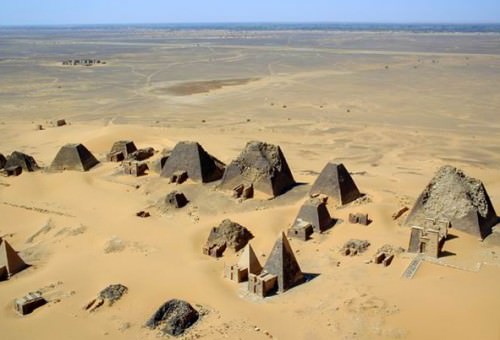
The Pyramids of Meroe
The kings of the city regulated trade and it is possible that they followed a model similar to Egypt's in which taxes and money from trade went to the government which then provided resources to the people. The iron industry boomed not only because of the expert craftsmen in the city but also the abundant natural resources of the enormous forests surrounding Meroe. Wood was required for the furnaces to smelt the iron and also in the production of charcoal and these furnaces burned hot on a daily basis. Scholar Kevin Shillington notes:
To this day, huge mounds of waste slag from their smelting furnaces rise up alongside the modern railway to bear witness to the enormous iron output of the ancient kingdom of Meroe. Iron provided the farmers and hunters of Meroe with superior tools and weapons. The development and use of iron was thus partly responsible for the very success, growth, and wealth of the Meroitic kingdom. (44)
Cuando Ergamenes subió al trono en 295 a. C., Meroe ya había prosperado durante siglos, pero sus reformas solo mejorarían el éxito de la ciudad. Según el historiador Diodoro Sículo (siglo I aC), Ergamenes había estudiado la filosofía griega y no estaba inclinado a seguir ciegamente las tradiciones religiosas de su pueblo. Entre estas tradiciones estaba la práctica de los sacerdotes de Amón eligiendo al monarca, estableciendo un lapso para el reinado de ese monarca, y decidiendo cuándo el rey debería morir por el bien de la gente y dejar paso a un sucesor.
ERGAMENES ROMPIÓ EL PODER DE LOS SACERDOTES DE AMUN E INICIÓ REFORMAS ADICIONALES PARA DISTANCIAR A MEROE DE LA INFLUENCIA EGIPCIA.
El culto a Amón había sido una poderosa fuerza política en Egipto durante milenios y ejerció el mismo tipo de influencia sobre los reyes de Kush. En Napata, de hecho, el faraón egipcio Thutmosis III (1458-1425 aC) construyó el templo de Amón, que se convertiría en el sitio religioso más importante del reino durante siglos. Al igual que en Egipto, el sacerdocio parece haber estado exento de impuestos y, por lo tanto, pudo acumular riqueza e influencia significativas.
Ergamenes rompió el poder de los sacerdotes mediante la acción directa, no la legislación, al llegar al templo de Napata con una fuerza armada y masacrarlos a todos. Luego descartó la tradición de la influencia del sacerdocio sobre el rey, aunque mantuvo el culto de Amón, e inició otras reformas para distanciar a Meroe de la influencia egipcia.
Los dioses, aunque todavía tienen alguna evidencia de la cultura egipcia, comienzan a aparecer como deidades indígenas durante su reinado. Las pirámides adquieren un estilo arquitectónico meroítico único. Los reyes y sus reinas aparecen con atuendo meroítico y el arte de la época pasa del egipcio a un estilo claramente indígena. Lo más importante es que los jeroglíficos egipcios desaparecen durante el reinado de Ergamenes para ser reemplazados por escritura meroítica. Esta reforma es significativa porque este guión aún no ha sido descifrado y, debido a esto, la historia de los últimos siglos del Reino de Kush está oscurecida.
It is clear that Kush had armies but very little is known about their organization. There was obviously a strong central government but daily administrative practices and even the process of succession is unclear. Trade flourished but precisely how it was conducted is unknown. The names of the rulers of Meroe and their probable reigns were pieced together by the archaeologist George A. Reisner (1867-1942 CE) who excavated Napata and Meroe and whose conclusions are still accepted for the most part but, even so, there are gaps and contradictions in his narrative which could only be resolved by a written history of the culture.
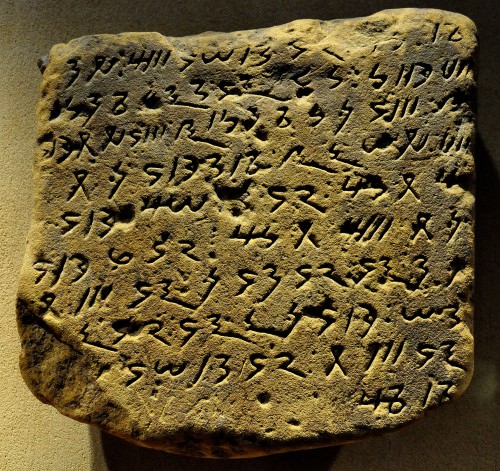
Cursive Block from Meroe
It is this lack of such a history which makes a discussion of the Candaces of Meroe so challenging. It appears that the practice in Meroe was that the brother of the king succeeded him, not the king's son, and yet the title of Candace seems to have originally referred to the king's mother which, according to scholar Derek A. Welsby, designates “the mother of the crown prince, ie the mother of the next king” (26). Since a Candace was also the wife of a reigning king this interpretation would mean that a king's son would succeed him and yet this does not seem to be the case. Welsby writes:
The evidence we have suggests that, even with a `legal' succession, there were no hard and fast rules for the choice of the next monarch and this can only have led to confusion and potential or actual conflict during the transfer of power. (27)
Whether there was such conflict, however, is far from clear. Evidence suggests continuing tension between the throne and temple, and possibly between successors, but no consensus can be reached on its interpretation. It may be that the erasure of names and destruction of certain monuments was due to conflict in dynastic succession or to the priests trying to reassert their power but just as easily may not have anything to do with either. It is also unknown exactly how much influence a queen in Meroe had prior to Ergamenes' reign; all that is known for certain is that after his reign some female rulers wielded considerable power and Meroe flourished accordingly.
THE CANDACES OF MEROE
Shanakdakhete (rc 170 BCE): The first queen to rule independently was Shanakdakhete (also given as Shanakdakheto) who appears in battle dress leading her armies. Under her reign, Meroe expanded its borders and the economy boomed. She may have performed a religious-political function along the lines of the position of God's Wife of Amun in Egypt (the female counterpart to the High Priest of Amun). Her adherence to Egyptian traditions is evident in her inscriptions where she refers to herself as “Son of Ra, Lord of the Two Lands, beloved of Ma'at” which is a common Egyptian designation. She is depicted with a young man, clearly a crown prince, who may be her successor Tanyidamani (dates unclear) but this is speculation. It is also unclear whether Tanyidamani even was her successor.
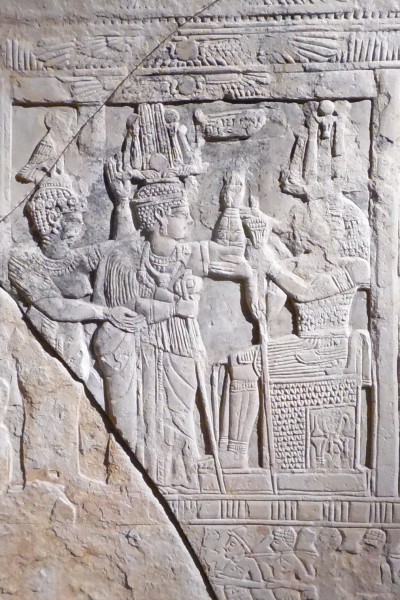
Candace Amanishakheto of Meroe
Amanirenas (rc 40-10 BCE): Amanirenas is best known as the queen who won favorable terms from Augustus Caesar (r. 27 BCE-14 CE) following the conflict known as the Meroitic War (27-22 BCE) between Kush and Rome. The war began in response to Kushite raiding parties making incursions into Roman Egypt. Rome had annexed Egypt as a province following the Battle of Actium in 31 BCE and it quickly became one of the new empire ’s most critical territories as it supplied Rome with an abundance of grain. The Roman prefect of Egypt, Gaius Petronius responded to the raids by invading Kush around 22 BCE and destroying the city of Napata. Amanirenas was in no way cowed and retaliated with further aggression. She is depicted as a courageous queen, blind in one eye, and a skilled negotiator. Following the conflict, her control of the terms is evident in Rome's respect in the peace talks and an increase in trade between Rome and Meroe. Amanirenas had captured a number of statues from Egypt, among them many of Augustus, which she returned following the peace; but the head of one she buried under the steps of a temple so that people would walk over Augustus in their daily visits. This is the famous Meroe Head now housed in the British Museum.
Amanishakheto (rc 10 BCE–1 CE): Little is known of Amanishakheto outside of her lavish grave goods of ornate jewelry. Her tomb was among the many in Meroe broken into and destroyed by the notorious treasure hunter Giuseppe Ferlini (1797-1870 CE) who had no interest in history or preservation and was only seeking gold and artifacts he could sell for a high price.Ruined inscriptions and reliefs from her tomb show her as a powerful queen who ruled independently but details of her reign have been lost.
Amanitore (rc 1-c. 25 CE): Amanitore reigned over the most prosperous period of Meroe's history. She was able to rebuild the Temple of Amun at Napata and renovated the large temple to the god in Meroe. Trade was at its height as evidenced by grave goods and other artifacts from the period and the iron industry and agriculture flourished as attested to by the amount of waste slag and improved irrigation canals dug during this time. She is depicted with her co-ruler King Natakamani but it is unclear if he was her husband or son and it seems she reigned alone later. She is depicted on her temple wall at Naqa conquering her enemies as a warrior queen. She may be the Candace referenced in Acts 8:27 of the Bible (mentioned at the start of this article) but this is contested; it is more likely that queen was Amantitere.
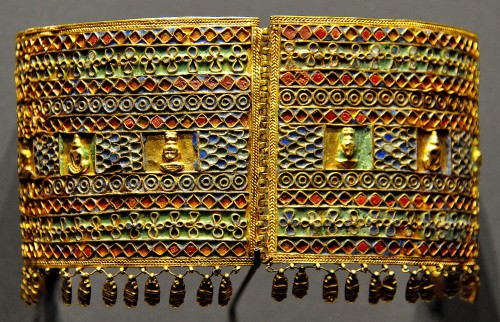
Armlet from Meroe
Amantitere (rc 25-c. 41 CE): Amantitere is the queen most often identified as the Candace in Acts 8:27. It has been suggested that she may have been Jewish only based on the passage in the Bible in which her eunuch, encountered by the apostle Philip, is reading the Book of Isaiah. There is no evidence in Meroe itself which supports the existence of a Jewish community but such communities did exist throughout Kush in small numbers. The biblical passage has also been cited to prove that Amantitere ruled alone since it states her eunuch had “great authority” and was in charge of her treasury but those statements hardly prove an autonomous queen any more than the eunuch's reading of Isaiah argues for her Judaism. Nothing is known of her reign but physical evidence from the period shows a high degree of affluence.
Amanikhatashan (rc 62-c. 85 CE): Nothing is known of her reign except for the military aid she provided to Rome during the First Jewish-Roman War of 66-73 CE. She sent Kushite cavalry but most likely also sent archers since the Kushite archers were legendary for their skill. One of the early Egyptian names for the region of Kush, in fact, was Ta-Sety (“The Land of the Bow”) for this reason. Nothing else is known of her reign but, like other later Candaces, she was most likely associated with the Egyptian goddess Nut as a High Priestess. Nut was the sky goddess who personified the canopy of the heavens and was mother to the primary deities Osiris, Isis, Set, Nephthys, and Horus the Elder. Although Egyptian script fell out of use during Ergamenes' reign, Egyptian gods such as Amun, Nut, and others continued to be venerated. It is possible, though far from clear, that Amanikhatashan would have served as the most powerful religious figure in Meroe as priestess of Nut.
Maleqorobar (rc 266-c. 283 CE) and Lahideamani (rc 306-c. 314 CE): Nothing is known of the reigns of these two queens.They are known to have ruled over Meroe during its decline but no other details have come to light. Meroe's wealth and prestige began to wane c. 200 CE when Rome elevated the Kingdom of Axum in Ethiopia to its primary partner in trade and Meroe was slighted. Exactly why Rome chose this course is unclear but part of the reason could have been the overuse of the land surrounding the city which depleted its resources. The forests had been used up in supplying fuel for the iron industry and the fields were depleted of nutrients through steady farming and overgrazing of livestock. In c. 330 CE Meroe was invaded by Axum, most likely under their king Ezana, and sacked; it was deserted c. 350 CE.
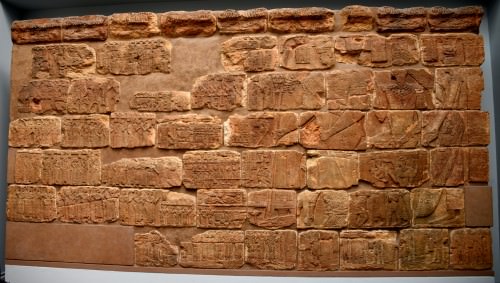
Relief from the Interior of the Funerary Chapel of a Meroe Queen
CONCLUSION
In 1834 CE, when Giuseppe Ferlini looted the treasures of Meroe he could find no buyers because the European market refused to believe that a black African kingdom had produced such incredible works. Egypt had long been “whitewashed” and was considered distinct from kingdoms to the south such as Kush which was associated with black Africa. Since it was mentioned in the Bible, Egypt, like Palestine, was routinely depicted as having been inhabited by white people by Europeans and Americans who had grown comfortable worshipping a white Jesus and honoring a white Moses but they never saw the need to extend this perceived “whiteness” all the way down the continent of Africa.
Almost one hundred years later, when George A. Reisner excavated Meroe, he concluded that the ruling class of Meroe were light-skinned people reigning over the “ignorant” black population who were elevated only by their monarchs exposing them to Egyptian culture. Reisner concluded this for the same racist reasons the white Europeans of Ferlini's time dismissed his artifacts. Even in the mid-20th century CE it was inconceivable to the scholarly community that a black-skinned people could have created a civilization such as the Kushite Kingdom of Meroe.
This same paradigm has been followed regarding the female rulers of that kingdom. It has been suggested that the Candace was a co-ruler with a male king and instances of a woman ruling alone are simply cases of a regent holding the throne for her son. This type of scenario is certainly possible - as noted, the Meroitic script has not been deciphered and the history of Meroe is far from clear - but in respect to the monarchy it seems quite apparent that women not only ruled but enabled the kingdom to prosper. The Candaces of Meroe, in fact, are among the most powerful and successful monarchs of the Kingdom of Kush and their skill in leadership was the equal, or better, of any king.
LICENSE
Article based on information obtained from these sources:with permission from the Website Ancient History Encyclopedia
Content is available under License Creative Commons: Attribution-NonCommercial-ShareAlike 3.0 Unported. CC-BY-NC-SA License